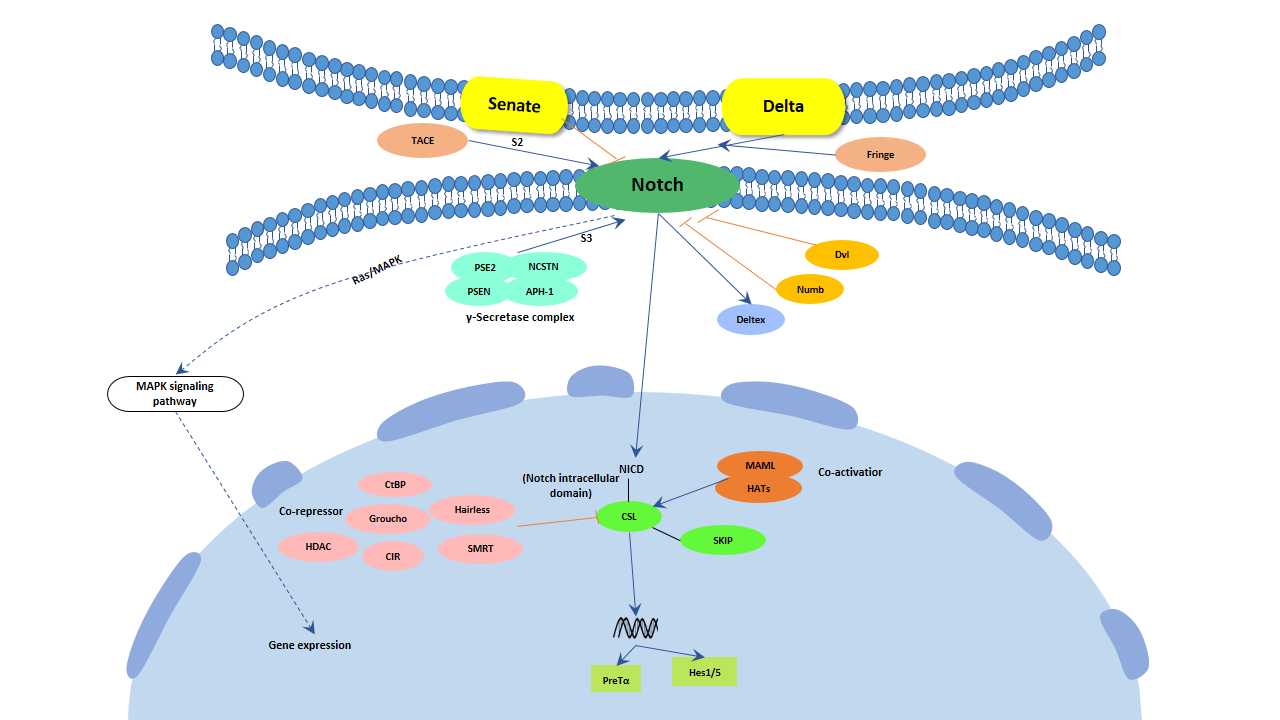
What is Notch Signaling Pathway?
Notch is a large class of transmembrane receptors. The Notch signaling pathway is a highly conserved, intercellular signaling mechanism essential for proper embryonic development in all metazoan organisms in the Animal kingdom. Notch signaling is an important pathway for communication between adjacent cells to regulate cell development.
Composition of Notch Signaling Pathway
Notch signaling pathway mainly consists of three parts: Notch receptor, Notch ligand (DSL protein) and intracellular effector molecule (CSL-DNA binding protein).
Mammals possess four different notch receptors, referred to as NOTCH1, NOTCH2, NOTCH3, and NOTCH4. Their primary function is to bind to the ligand and initiate the Notch signal. The Notch proteins (Notch1-Notch4 in vertebrates) are single-pass receptors that are activated by the Delta (or Delta-like) and Jagged/Serrate families of membrane-bound ligands.
Notch ligand, also known as DSL protein, is a transmembrane protein with a conserved molecular structure. Five Notch ligands are currently known, namely Delta like (DLL1, DLL3, DLL4), Jagged1 and Jagged 2.
Intracellular effector molecules: CBF-1 (C-promoter binding factor-1), which is also called RBP-Jκ (recombination signal binding protein-jκ) in mammals. It's a transcription suppressor. In the Notch signaling pathway, CBF-1 recognizes Notch induction and binds to specific DNA sequences (GTGGGAA) on gene promoters.
Activation of Notch Signaling Pathway
The Notch signaling pathway is divided into canonical and non-canonical pathways depending on whether RBP-Jκ is involved in pathway conduction.
The canonical Notch signaling pathway process is as follows:
The unactivated Notch receptor releases a soluble intracellular domain (NICD) after three hydrolysiss. Subsequently, the NICD translocates to the nucleus, where it forms a complex with the DNA binding protein CSL, displacing a histone deacetylase (HDAc)-co-repressor (CoR) complex from CSL. Components of an activation complex, such as MAML1 and histone acetyltransferases (HATs), are recruited to the NICD-CSL complex, leading to the transcriptional activation of Notch target genes.
Notch signal changes are closely related to the occurrence and development of tumors, genetic diseases, autoimmune diseases and other diseases. The study of this pathway can provide a target for the treatment of diseases.





